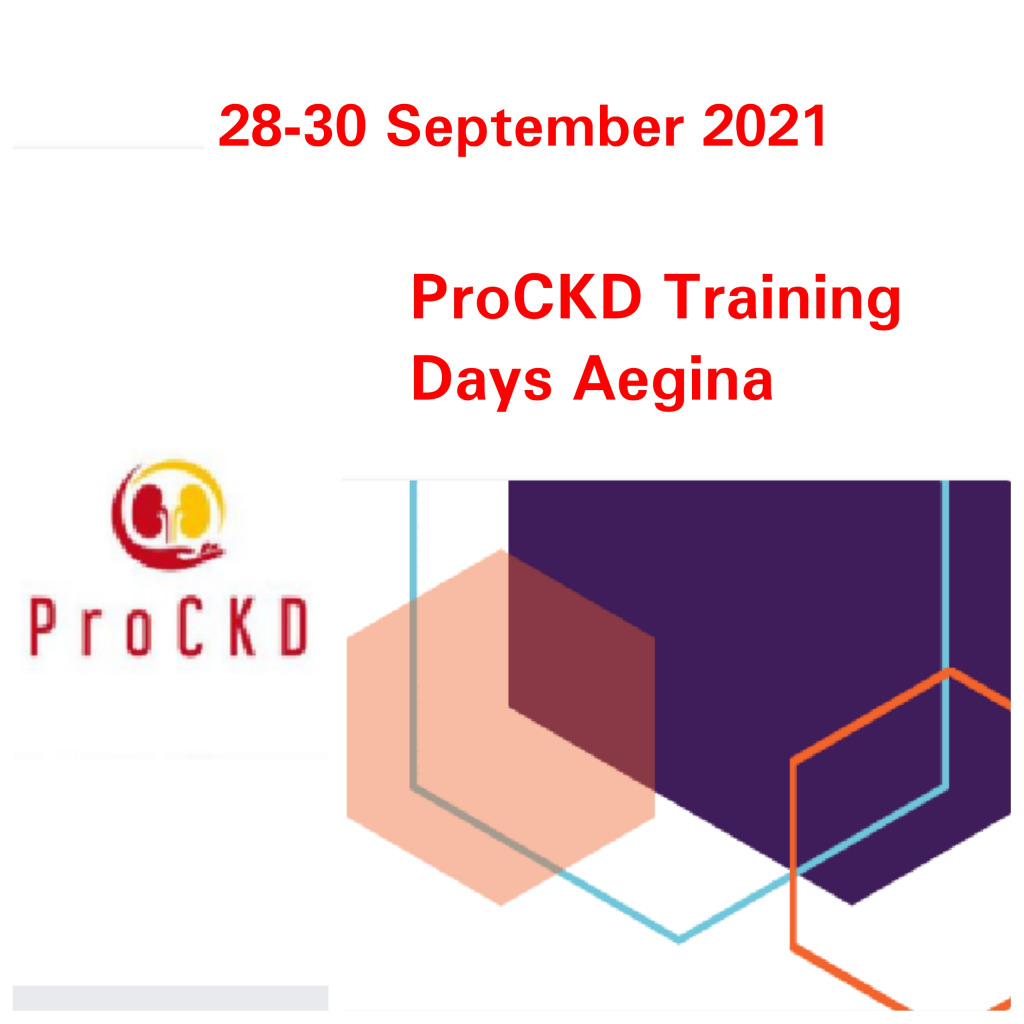ProCKD Training Days Aegina

The ProCKD project will focus on the needs and problems of patients from Spain, Turkey, Greece, and the Netherlands, regarding how the employed patients cann be assured to stay in the workforce after initiation of dialysis, how they can be convinced to continue training and education, and how unemployed patients can be helped to join the workforce. Understanding the factors influencing employment rates, removing the obstacles for a person who wish to have a fulfilling professional life.

Learning Activity
The learning activity in Aegina, Greece, will be a chance to show a direct practice in integrating patients with Chronic Kidney Disease as peer leaders. The training will directly strengthen competences of patients with Chronic Kidney Disease and their family to be able to council and mentor other patients with Chronic Kidney Disease for employability and entrepreneurship opportunities, and to motivate them to engage in further professional development.
Patients with CKD (Chronic Kidney Disease) or ESRD (End Stage Renal Disease) face many barriers to remaining in or joining the workforce. Especially, after starting dialysis treatment. These include poor employment opportunities because of disadvantaged socioeconomic status, fatigue and other symptoms of renal failure, depression and feelings of social isolation, comorbid diseases, transportation issues, potential loss of disability and/or medical assistance benefits with employment, scheduling conflicts with dialysis, and the assumption by some employers that patients on dialysis are too sick or undependable to work. This societal perception that patients with ESRD are unable to work completes a vicious cycle of low expectations for employment.
For employment preserving strategies to succeed, there must be a fundamental change in the way that health care is delivered to vulnerable populations, with improved disease management and funding for the social services required to overcome the employment disincentives. Improving access to medical care, including early evaluation by a nephrologist; availability of home dialysis modalities; proper patient preparation, including integrated pre-dialysis education models; and encouraging vocational rehabilitation are possible interventions to assist patients in rejoining or remaining in the workforce.
This societal perception that patients with ESRD are unable to work completes a vicious cycle of low expectations for employment. For employment-preserving strategies to succeed, there must be a fundamental change in the way that health care is delivered to vulnerable populations, with improved disease management and funding for the social services required to overcome the employment disincentives.
Improving access to medical care, including early evaluation by a nephrologist; availability of home dialysis modalities; proper patient preparation, including integrated pre-dialysis education models; and encouraging vocational rehabilitation are possible interventions to assist patients in rejoining or remaining in the workforce.
Training Activity Brochure
